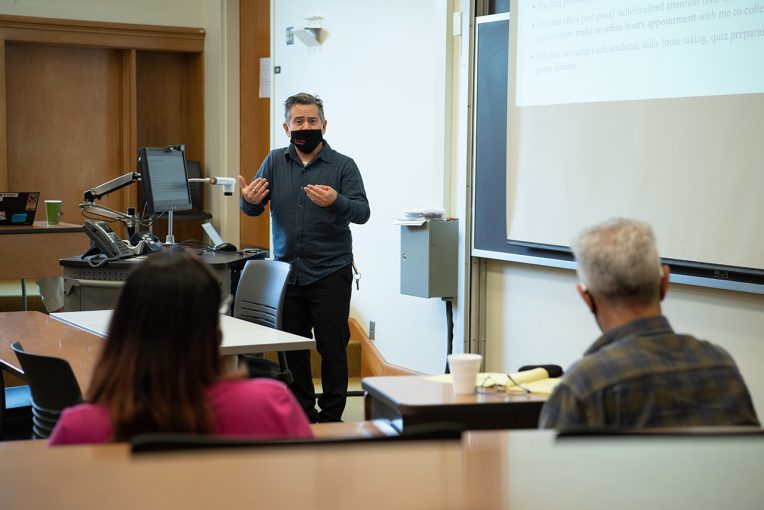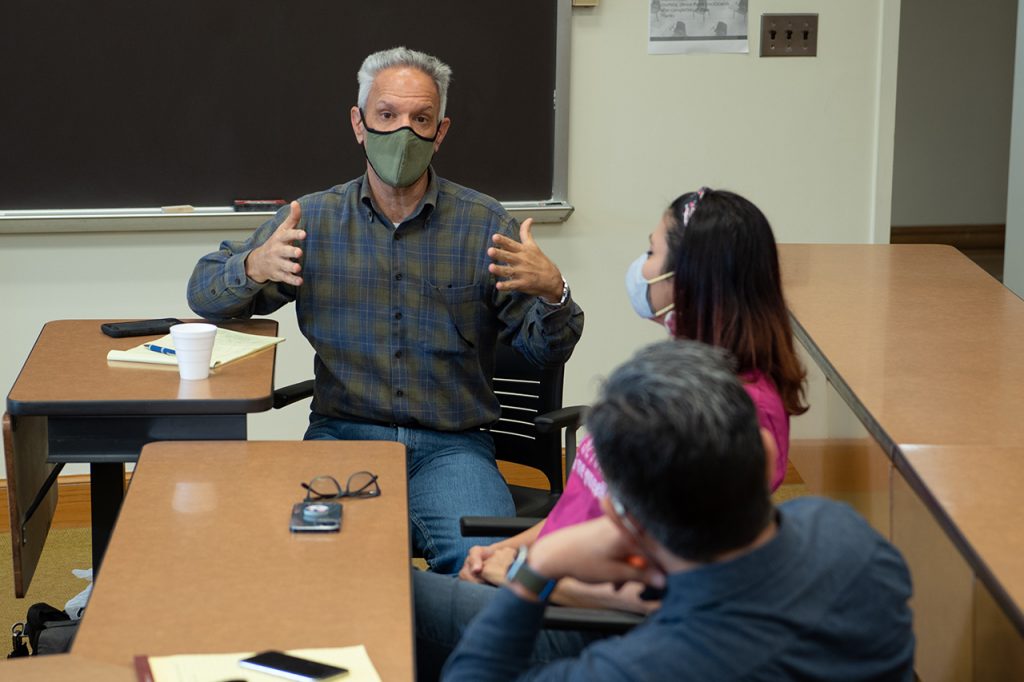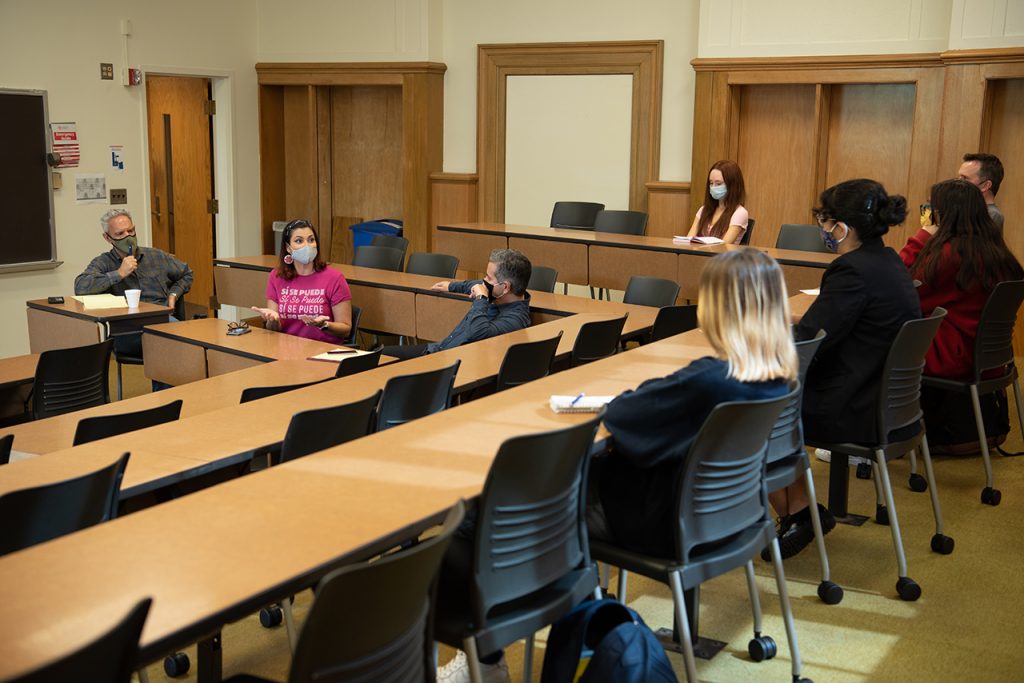Last week, three Illinois State professors led a public discussion on the affirmation of the bilingual skills and cultural identities of first-year students.
Drs. Alejandro Enriquez, Daynali Flores-Rodriguez, and James Pancrazio were the panelists for the event held October 8 in Williams Hall as part of the Latin American and Latino/a Studies (LALS) Program’s long-running Brown Bag Lecture Series. This installment, titled Conversando Entre Nosotros: Redefining Student Success Through Language, was held in celebration of Latinx Heritage Month.
The faculty highlighted modifications made to the Introduction to Latina/o Studies course. Two sections of the course have been reworked to incorporate elements of Pancrazio’s University Success Skills, a class designed to aid what he calls “first-time-in-college” students in the transition into college by teaching them the skills necessary to succeed academically.
The introductory course has been held for roughly 16 years, but the altered sections, called LAL 109: Introduction to Latina/o Studies, are considered new this academic year as classes are half the normal size, with fewer than 20 students per section. The course is meant to cater to bilingual/translingual first-generation American and first-generation college students. To enroll in one of the two sections taught by Enriquez and Flores-Rodriguez, students must be incoming freshmen and heritage Spanish speakers.
For Flores-Rodriguez the first step in assisting students was instilling a support system in the class. She recalled her own experience moving to Illinois from Puerto Rico and the feelings of isolation that came with being at a university for the first time.
“There were no specific ways to create community, especially in the United States where we lean towards individualism,” Flores-Rodriguez said. “Latin American countries, Spanish-speaking countries, Latin communities—they thrive in the collective because we rely on each other to survive and to thrive. But we don’t always have the setup to create those communities easily, so I knew that that was one thing I wanted to build on in my classes. I wanted to build a sense of community; I want for my students to rely on each other and to actually be glad to be together.”
Enriquez cited individualized attention, a core value of the University, as one of the most impactful practices he has incorporated into the course. For a paper assigned at the beginning of the semester, 10% of the grade relied on students making an appointment to meet with Enriquez to pick up their assignments. Once they retrieved their work, they had the opportunity to talk with the professor and go over feedback in person. With this Enriquez broke the ice, and opened the door for further communication between the professor and the student.
The most crucial aspect of the class design is the way in which language is used. Formal and informal English and Spanish are woven throughout the course material. Flores-Rodriguez said utilizing accessible Spanish and English “demystifies the idea of college” for her students. Enriquez uses a daily exercise to approach this technique.
“I call it, ‘First, we’re nice,’” Enriquez said. “I tell my students, ‘This is the agenda for today, we’re going to do this, this, and that, but first, we’re nice.’ And I ask them to talk a little bit to the people around them. At first they’re really quiet, and the silence makes them really uncomfortable, but little by little they start talking. It’s wonderful because I’m recreating the language class environment in a nonlanguage class. Students are freely conversing in both English and Spanish themselves and it’s really awesome to see.”
Flores-Rodriguez works to accommodate the varying capabilities of her students. Though she is constantly offering feedback and making corrections to the work turned in, students are never penalized for improper form.
“I would not be here if I didn’t have college professors who overlooked my ideas over the way I conveyed my ideas,” Flores-Rodriguez said. “I want your ideas. I want to know that you are learning what I’m teaching you. Now, I’m going to mark the mistakes, the grammar mistakes, but they don’t count for your grade because I want you to be aware of what it is that’s hard, identify that, work on it, and be able to improve.”
Pancrazio said the pace of the American college experience contributes to a transactional drive-thru culture. With a smaller class size and their course adaptations, the instructors hope to slow things down and better accommodate their students’ needs.
Though the semester is not over, both professors have noticed results in their students.
“The response has been overwhelmingly positive,” Enriquez said. “I feel that any first-year class can be similarly redefined to incorporate these elements. It is one way to ensure that our students can truly succeed.”



